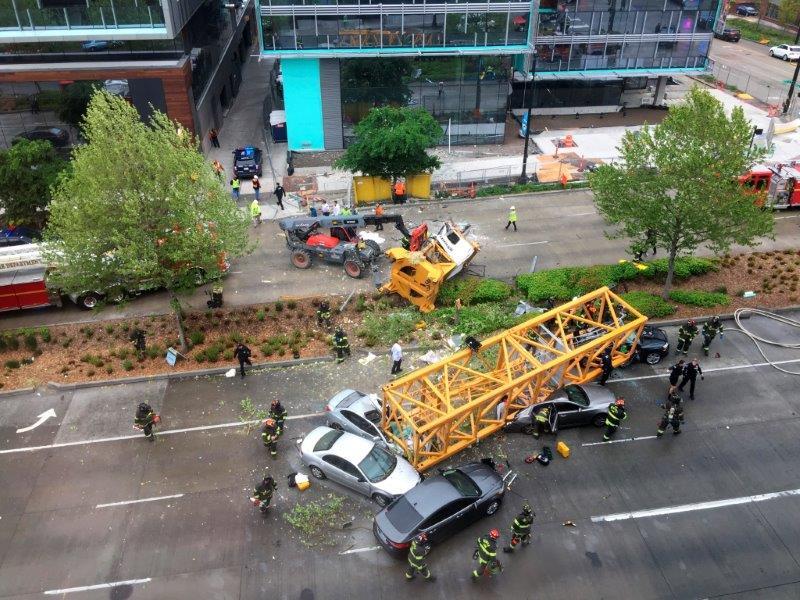A giant construction crane collapsed onto a busy downtown Seattle street, killing 4 people. Human error may be to blame for the Seattle crane collapse on Saturday that killed four people and injured four others, experts said Monday. Based on videos of the collapse, experts believe the workers who disassembled the construction crane removed pins holding sections of the crane together too soon.
The crane’s mast fell Saturday afternoon as workers took it apart. Sections landed on top of the new Google building it was working on and other pieces hit six vehicles on the busy street below. The two ironworkers on the crane died; they were identified by King County as Andrew Yoder, 31, and Travis Corbet, 33. Retired city employee Alan Justad, 71, and Seattle Pacific University freshman Sarah Wong, 19, died after the crane crushed them in cars. Washington Department of Labor and Industries inspectors were expected to finish work at the scene Monday, said Tim Church, a department spokesman. He said it was too early to speculate on a cause. But Barth, who has been a tower crane operator, inspector and accident investigator for 38 years, said workers did not safely disassemble the tower crane by sections.
“The reason this tower fell over is ironworkers and the people working on it did not follow the manufacturer’s instructions for disassembling the crane,” said South Carolina crane accident investigator Tom Barth. “If the pins had been in, that crane would not have fallen over.”
Crews shouldn’t have taken out the bolts holding together one section to a section below it, Barth said, until they secured line from another crane to the top of the section getting removed. Videos show sections of the crane separating cleanly, suggesting crews likely removed pins early, said Dave Kwass, a trial attorney who handles crane accident lawsuits.
“Where I would be starting as an investigator is getting a better grasp of what these two ironworkers who tragically were killed may have done in removing the pins,” Kwass said. “What I’m seeing is a crane that looks as though the pins were popped all the way down to the pedestal section.”
Investigators previously concluded removing securing pins too early caused a 2012 crane collapse at the University of Texas at Dallas.
The Washington state investigation covers five companies involved in the construction: general contractor GLY, Northwest Tower Crane Service Inc., Omega Rigging and Machinery Moving Inc. and Morrow Equipment Co. LLC and Seaburg Construction Corp.
An iron cross bearing the numbers of Ironworkers Local union chapters from Portland and Seattle stands next to flowers, Monday, April 29, 2019, at a memorial on a median across the street from where a construction crane collapsed and fell Saturday, killing four people, two of whom were ironworkers.

COMMENTS